Posts (page 53)
-
 7 min readWhen selecting the right pump for a garden water fountain, there are several factors to consider. It is important to first determine the size and depth of the fountain, as well as the flow rate and water volume needed to create the desired effect.Once you have an understanding of these requirements, you can then choose a pump that is the appropriate size and power for your fountain.
7 min readWhen selecting the right pump for a garden water fountain, there are several factors to consider. It is important to first determine the size and depth of the fountain, as well as the flow rate and water volume needed to create the desired effect.Once you have an understanding of these requirements, you can then choose a pump that is the appropriate size and power for your fountain.
-
 5 min readAdding lighting to a garden water fountain can enhance its beauty and create a stunning ambiance in the evening hours. To do this, you can use underwater LED lights that are specifically designed for outdoor use. These lights can be placed underneath the water to illuminate the fountain from within, creating a mesmerizing effect.Alternatively, you can also use spotlights or landscape lighting to highlight the fountain from above.
5 min readAdding lighting to a garden water fountain can enhance its beauty and create a stunning ambiance in the evening hours. To do this, you can use underwater LED lights that are specifically designed for outdoor use. These lights can be placed underneath the water to illuminate the fountain from within, creating a mesmerizing effect.Alternatively, you can also use spotlights or landscape lighting to highlight the fountain from above.
-
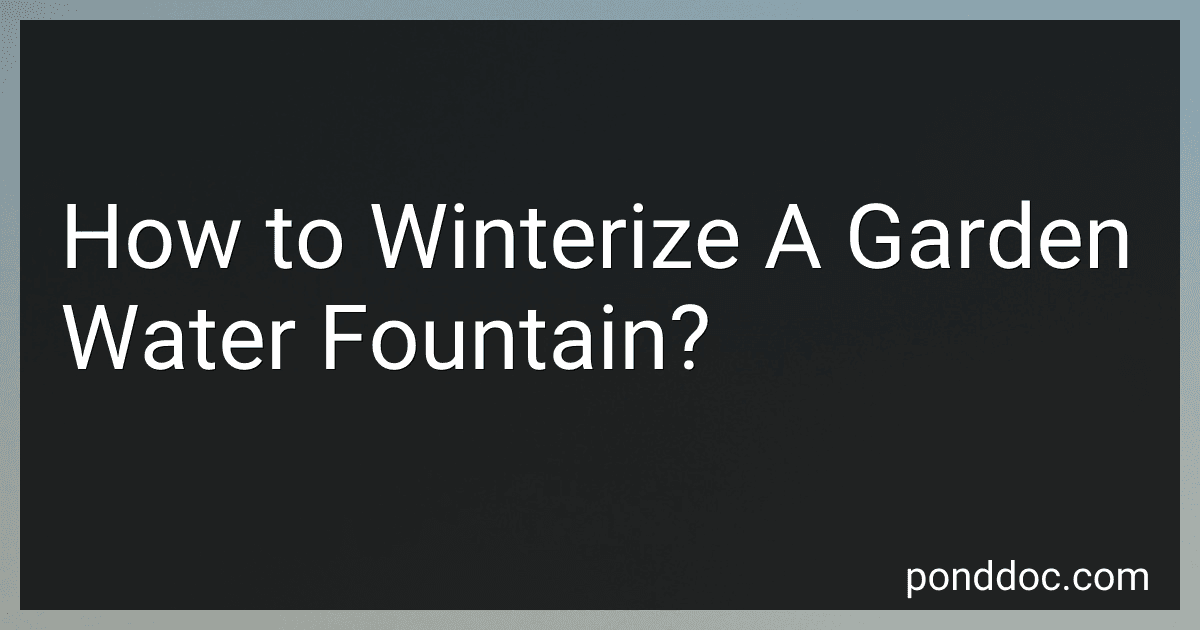 4 min readTo winterize a garden water fountain, you will first need to drain the water completely from the fountain and the pump. Once the water has been drained, disconnect the pump and remove it from the fountain. Clean the pump thoroughly to remove any debris or buildup.Next, cover the fountain to protect it from snow, ice, and other winter elements. You can use a waterproof tarp or cover specifically designed for fountains.
4 min readTo winterize a garden water fountain, you will first need to drain the water completely from the fountain and the pump. Once the water has been drained, disconnect the pump and remove it from the fountain. Clean the pump thoroughly to remove any debris or buildup.Next, cover the fountain to protect it from snow, ice, and other winter elements. You can use a waterproof tarp or cover specifically designed for fountains.
-
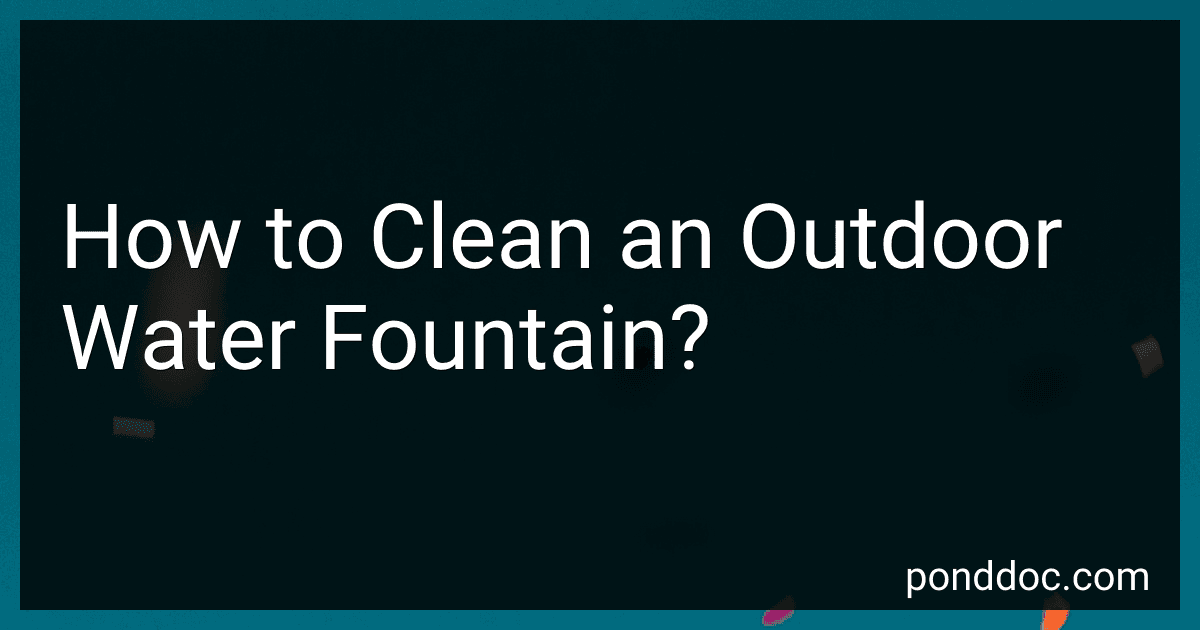 5 min readTo clean an outdoor water fountain, start by turning off the pump and draining the water from the fountain. Remove any debris like leaves, twigs, or algae from the fountain basin and scrub it with a mild detergent or fountain cleaner. Use a scrub brush or sponge to clean the surface of the fountain and rinse it thoroughly with clean water. Inspect the pump and filter for any debris or blockages and clean them if necessary.
5 min readTo clean an outdoor water fountain, start by turning off the pump and draining the water from the fountain. Remove any debris like leaves, twigs, or algae from the fountain basin and scrub it with a mild detergent or fountain cleaner. Use a scrub brush or sponge to clean the surface of the fountain and rinse it thoroughly with clean water. Inspect the pump and filter for any debris or blockages and clean them if necessary.
-
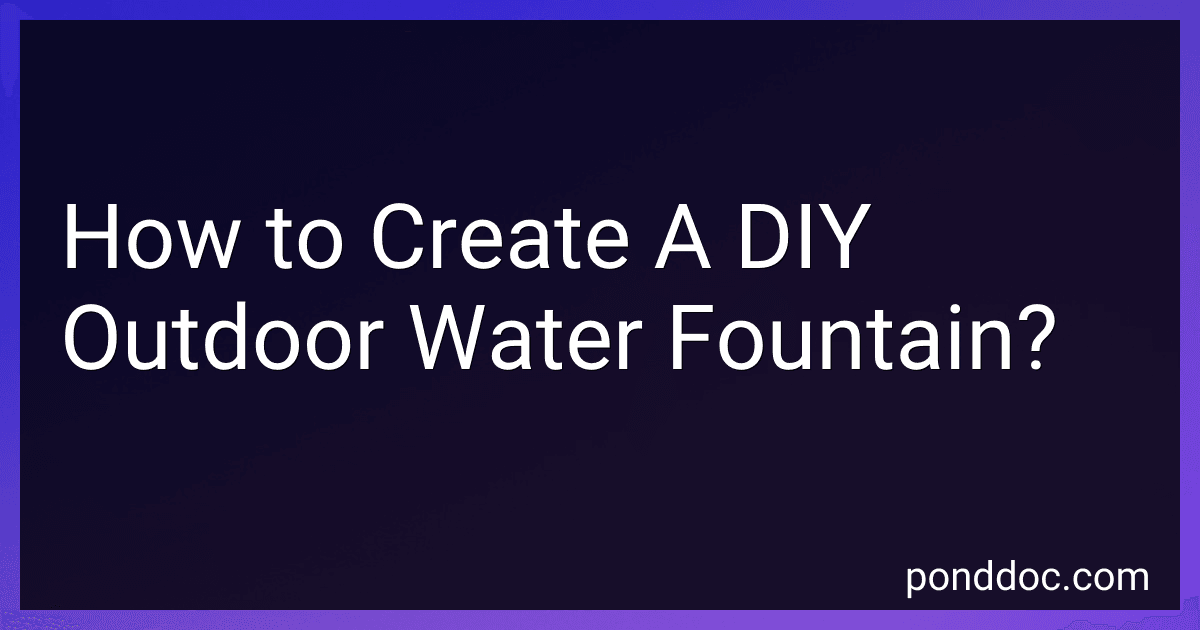 6 min readCreating a DIY outdoor water fountain can be a fun and rewarding project that adds beauty and tranquility to your outdoor space. To get started, you will need a water pump, a container for the water, rocks or pebbles, and a decorative element such as a statue or sculpture.First, choose a location for your water fountain that is close to a power source. Next, place your container in the desired spot and secure it in place.
6 min readCreating a DIY outdoor water fountain can be a fun and rewarding project that adds beauty and tranquility to your outdoor space. To get started, you will need a water pump, a container for the water, rocks or pebbles, and a decorative element such as a statue or sculpture.First, choose a location for your water fountain that is close to a power source. Next, place your container in the desired spot and secure it in place.
-
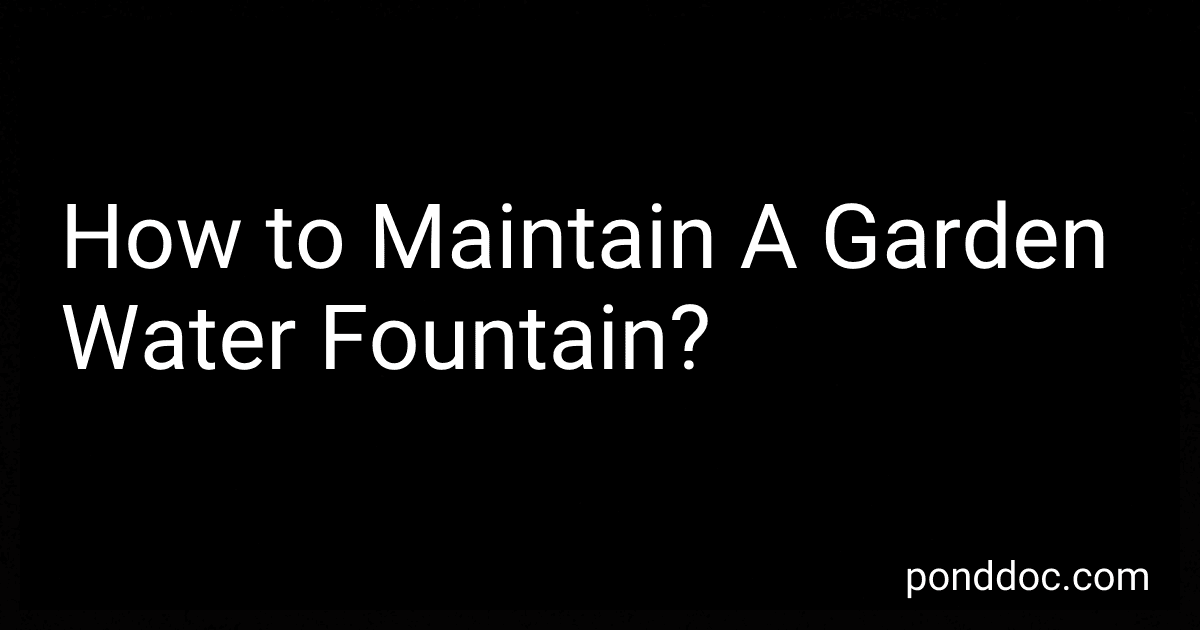 5 min readTo maintain a garden water fountain, it is important to regularly check the water level and refill as needed to prevent the pump from running dry. Clean the fountain and pump periodically to remove any debris or algae buildup that can clog the system or cause pump malfunctions. Use a mild detergent and a soft brush to gently scrub the surface of the fountain.In addition, ensure that the pump is functioning properly by checking for any signs of damage or wear and tear.
5 min readTo maintain a garden water fountain, it is important to regularly check the water level and refill as needed to prevent the pump from running dry. Clean the fountain and pump periodically to remove any debris or algae buildup that can clog the system or cause pump malfunctions. Use a mild detergent and a soft brush to gently scrub the surface of the fountain.In addition, ensure that the pump is functioning properly by checking for any signs of damage or wear and tear.
-
 5 min readWhen choosing the best outdoor water fountain for your garden, consider the size of your space and the overall aesthetic you are trying to achieve. Choose a fountain that fits the scale of your garden and complements the style of your outdoor décor.Think about the material of the fountain, whether you prefer stone, metal, or resin. Each material has its own unique qualities and maintenance requirements.
5 min readWhen choosing the best outdoor water fountain for your garden, consider the size of your space and the overall aesthetic you are trying to achieve. Choose a fountain that fits the scale of your garden and complements the style of your outdoor décor.Think about the material of the fountain, whether you prefer stone, metal, or resin. Each material has its own unique qualities and maintenance requirements.
-
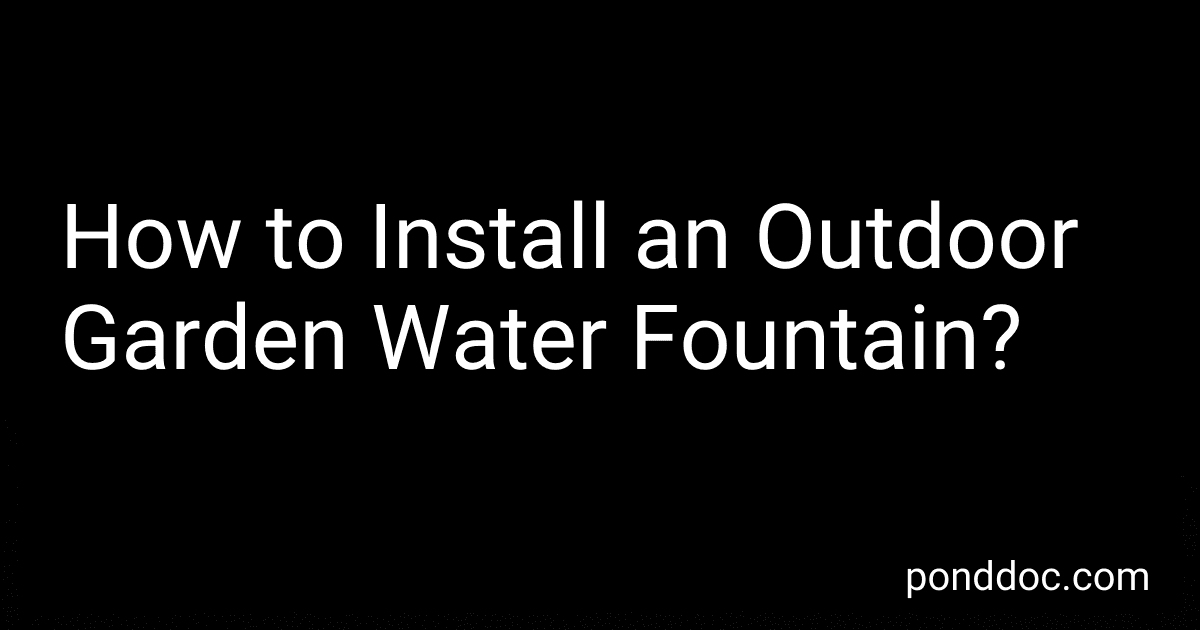 5 min readInstalling an outdoor garden water fountain can be a simple and rewarding project that adds beauty and tranquility to your outdoor space. First, you will need to choose a location for your fountain that is level and has access to electricity. Next, prepare the area by clearing any debris and leveling the ground if necessary.Then, assemble the fountain according to the manufacturer's instructions, making sure to securely connect all parts.
5 min readInstalling an outdoor garden water fountain can be a simple and rewarding project that adds beauty and tranquility to your outdoor space. First, you will need to choose a location for your fountain that is level and has access to electricity. Next, prepare the area by clearing any debris and leveling the ground if necessary.Then, assemble the fountain according to the manufacturer's instructions, making sure to securely connect all parts.
-
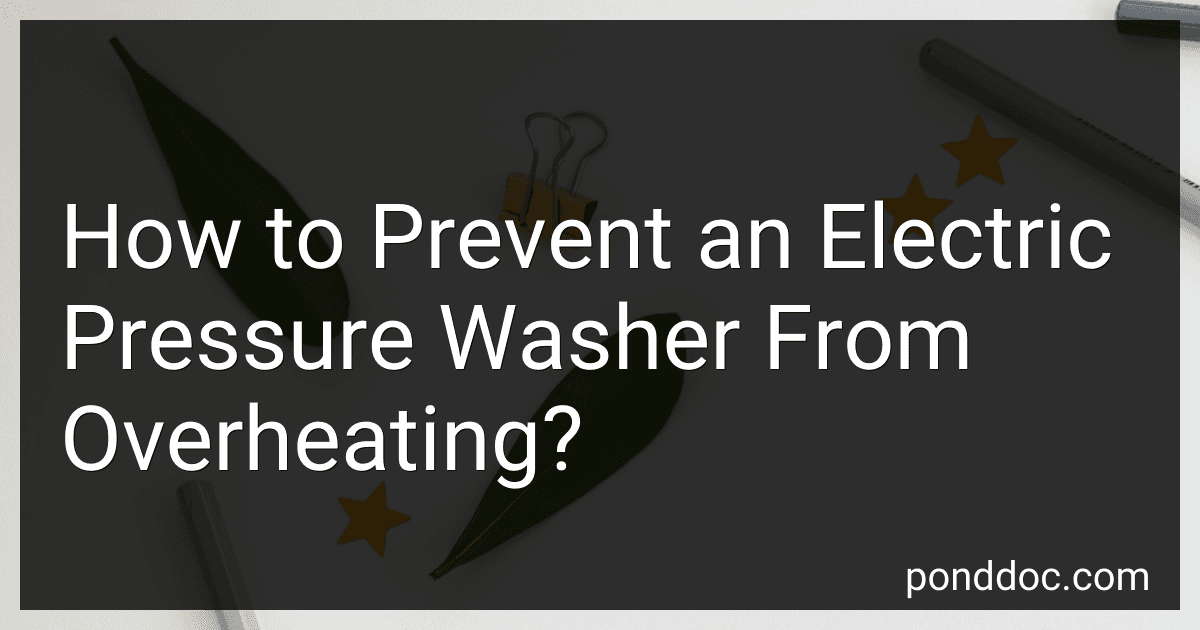 5 min readTo prevent an electric pressure washer from overheating, it is important to ensure proper ventilation during use. Make sure the unit is positioned in a well-ventilated area and not enclosed in a small space. Regularly check the air intake and exhaust vents to ensure they are not blocked by debris or obstacles.Avoid operating the pressure washer for prolonged periods of time without breaks. Allow the unit to cool down between uses, especially when tackling tough cleaning tasks.
5 min readTo prevent an electric pressure washer from overheating, it is important to ensure proper ventilation during use. Make sure the unit is positioned in a well-ventilated area and not enclosed in a small space. Regularly check the air intake and exhaust vents to ensure they are not blocked by debris or obstacles.Avoid operating the pressure washer for prolonged periods of time without breaks. Allow the unit to cool down between uses, especially when tackling tough cleaning tasks.
-
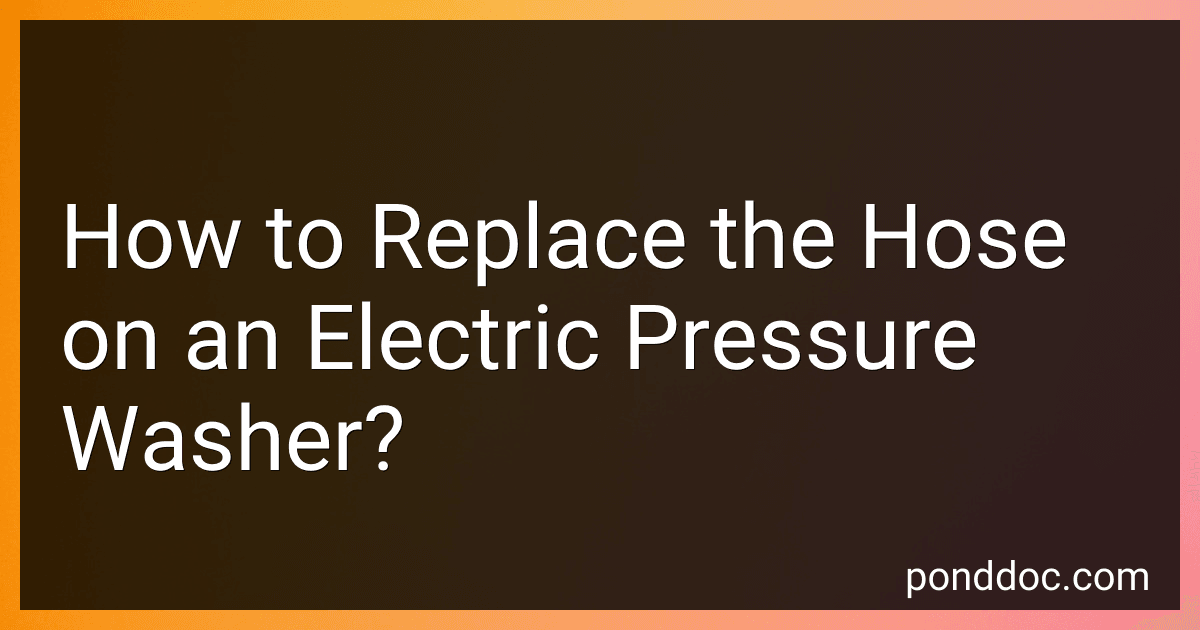 7 min readTo replace the hose on an electric pressure washer, start by turning off the machine and disconnecting it from the power source. Next, detach the old hose from the pressure washer and the spray gun by loosening the connections with a wrench. Then, inspect the new hose to make sure it matches the specifications of your pressure washer. Attach one end of the new hose to the pressure washer with a wrench, ensuring it is securely tightened.
7 min readTo replace the hose on an electric pressure washer, start by turning off the machine and disconnecting it from the power source. Next, detach the old hose from the pressure washer and the spray gun by loosening the connections with a wrench. Then, inspect the new hose to make sure it matches the specifications of your pressure washer. Attach one end of the new hose to the pressure washer with a wrench, ensuring it is securely tightened.
-
 5 min readTo use detergent with an electric pressure washer, first, choose a detergent that is safe for use with pressure washers. Next, fill the detergent reservoir or attachment with the appropriate amount of detergent as specified on the product label. Connect the detergent nozzle or attachment to the pressure washer wand. Adjust the pressure washer settings to a low pressure or soap setting. Then, spray the detergent onto the surface you want to clean, making sure to cover the entire area evenly.
5 min readTo use detergent with an electric pressure washer, first, choose a detergent that is safe for use with pressure washers. Next, fill the detergent reservoir or attachment with the appropriate amount of detergent as specified on the product label. Connect the detergent nozzle or attachment to the pressure washer wand. Adjust the pressure washer settings to a low pressure or soap setting. Then, spray the detergent onto the surface you want to clean, making sure to cover the entire area evenly.
-
 4 min readIf you are experiencing low pressure in your electric pressure washer, there are a few possible solutions to try. First, check the water source to ensure that there are no kinks in the hose or debris blocking the inlet. Next, check the nozzle for any obstructions that may be limiting the water flow. If the nozzle is clear and the water source is adequate, try adjusting the pressure settings on the machine to see if that improves the output.
4 min readIf you are experiencing low pressure in your electric pressure washer, there are a few possible solutions to try. First, check the water source to ensure that there are no kinks in the hose or debris blocking the inlet. Next, check the nozzle for any obstructions that may be limiting the water flow. If the nozzle is clear and the water source is adequate, try adjusting the pressure settings on the machine to see if that improves the output.